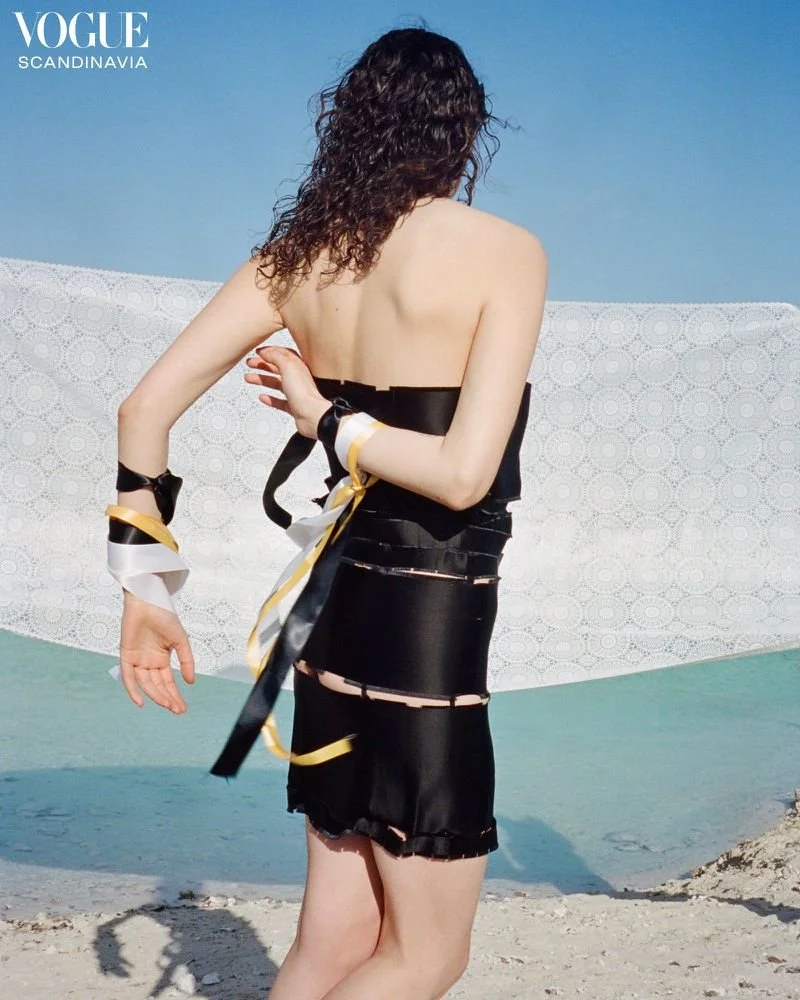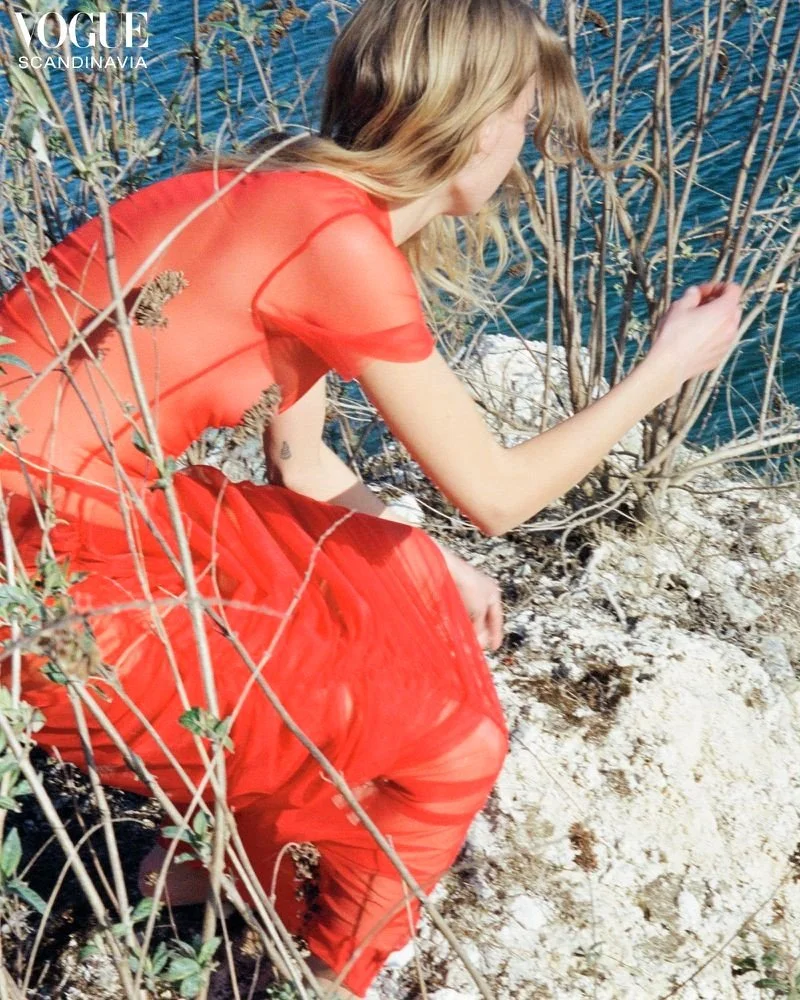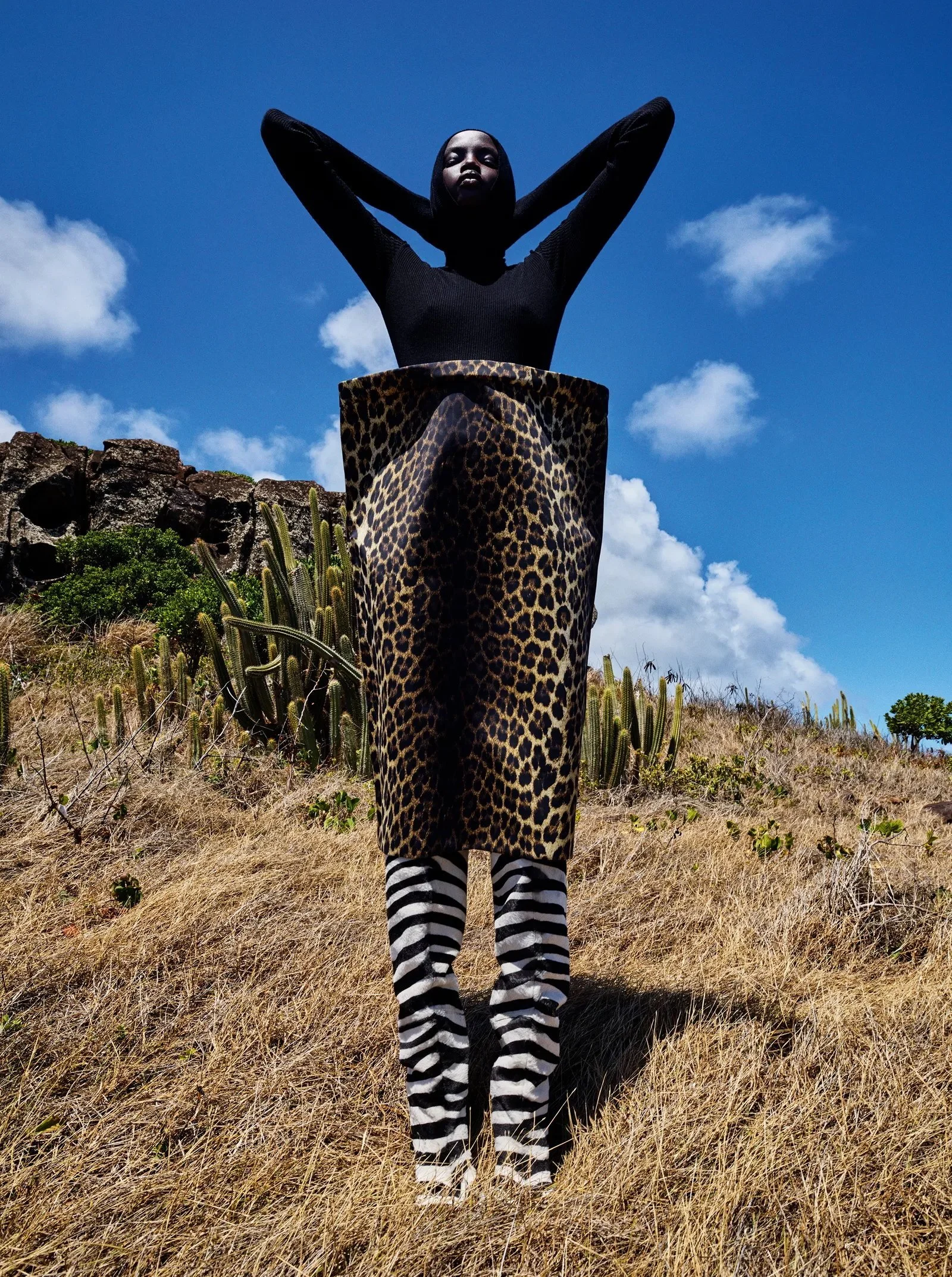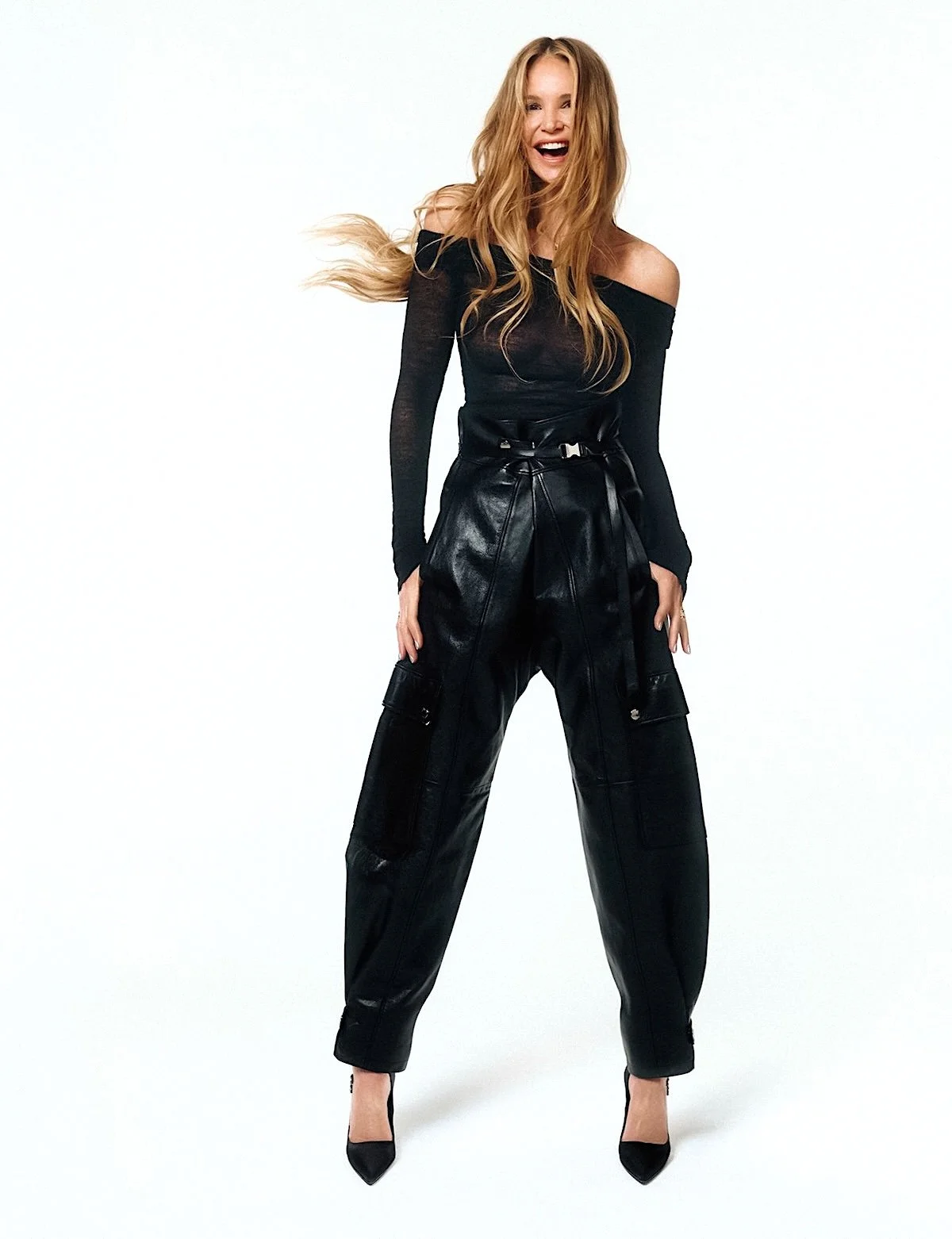Vogue Scandinavia's 'Nordic Dystopia', Perhaps a Reference to the Rök Stone Catastrophe
/Olivia Frolich Captures 'Nordic Dystopia' in Vogue Scandinavia #6 June 2022 AOC Fashion
Phoebe Matthews and Rebekka Eriksen are styled by Kristine Halken in ‘Nordic Dystopia’. Photographer Olivia Frølich [IG] captures the mostly-white, barren nature, fashion story for Vogue Scandinavia #6, June 2022.
AOC works hard to identify any backstories or cultural references in fashion stories and ad campaigns. We came up empty-handed all over Instagram checking the individual IGs of the people named above.
Reality is that the Scandinavian countries are deeply admired for many reasons, but environmental awareness and a necessary austerity due to the impact of fashion-world consumption on nature are well-established in the culture.
Did Vikings Worry About Climate Catastrophe?
We did unearth a fascinating 2020 story in BBC Travel suggesting that Vikings were concerned about a climate catastrophe 1,200 years ago.
Researchers including archaeologists, linguists, religion scholars and climate experts analyzed the inscriptions of the Rök Stone, an incredibly well-preserved, famous runic monument of the Viking Age.
The raised, inscribed memorial stone was discovered in the 1600s in the Swedish province of Östergötland. For centuries humans have assumed that the battles referenced by the Rök Stone were between conquering armies of able-bodied humans.
It’s only now that this interdisciplinary team of researchers was able to decipher the stone’s etched inscriptions or runes that comprise the Viking language. The new study shows that the inscriptions reflect an entirely different kind of battle: a conflict between light and darkness, warmth and cold, literally the life and death of humanity
In 2020, the research team released a study confirming that the runes allude to a cold climate crisis that happened between 536 and 550AD – some 300 years before the Rök Stone was created. A series of volcanic eruptions spewed so much ash into the sky that the sun was no longer visible.
"The key to unlocking the inscription was the interdisciplinary approach. Without these collaborations between textual analysis, archaeology, history of religions and runology, it would have been impossible to solve the riddles of the Rök runestone," says Per Holmberg, professor in Swedish at the University of Gothenburg, who led the study.
To quote BBC Travel:
This led to abnormally cold summers in the Scandinavian peninsula, resulting in crop failures and hunger. It is estimated that at least 50% of the local population died because of the crisis.
This traumatic event might have helped shape the myth of Ragnarök. The story describes a series of events, including obstruction of the sunlight and the Fimbulwinter, or “the Great Winter” – ultimately leading to the end of civilisation.

































